I have a folder with hundreds of txt files I need to analyse for similarity. Below is an example of a script I use to run similarity analysis. In the end I get an array or a matrix I can plot etc.
I would like to see how many pairs there are with cos_similarity > 0.5 (or any other threshold I decide to use), removing cos_similarity == 1 when I compare the same files, of course.
Secondly, I need a list of these pairs based on file names.
So the output for the example below would look like:
1
and
["doc1", "doc4"]
Will really appreciate your help as I feel a bit lost not knowing which direction to go.
This is an example of my script to get the matrix:
doc1 = "Amazon's promise of next-day deliveries could be investigated amid customer complaints that it is failing to meet that pledge."
doc2 = "The BBC has been inundated with comments from Amazon Prime customers. Most reported problems with deliveries."
doc3 = "An Amazon spokesman told the BBC the ASA had confirmed to it there was no investigation at this time."
doc4 = "Amazon's promise of next-day deliveries could be investigated amid customer complaints..."
documents = [doc1, doc2, doc3, doc4]
# In my real script I iterate through a folder (path) with txt files like this:
#def read_text(path):
# documents = []
# for filename in glob.iglob(path+'*.txt'):
# _file = open(filename, 'r')
# text = _file.read()
# documents.append(text)
# return documents
import nltk, string, numpy
nltk.download('punkt') # first-time use only
stemmer = nltk.stem.porter.PorterStemmer()
def StemTokens(tokens):
return [stemmer.stem(token) for token in tokens]
remove_punct_dict = dict((ord(punct), None) for punct in string.punctuation)
def StemNormalize(text):
return StemTokens(nltk.word_tokenize(text.lower().translate(remove_punct_dict)))
nltk.download('wordnet') # first-time use only
lemmer = nltk.stem.WordNetLemmatizer()
def LemTokens(tokens):
return [lemmer.lemmatize(token) for token in tokens]
remove_punct_dict = dict((ord(punct), None) for punct in string.punctuation)
def LemNormalize(text):
return LemTokens(nltk.word_tokenize(text.lower().translate(remove_punct_dict)))
from sklearn.feature_extraction.text import CountVectorizer
LemVectorizer = CountVectorizer(tokenizer=LemNormalize, stop_words='english')
LemVectorizer.fit_transform(documents)
tf_matrix = LemVectorizer.transform(documents).toarray()
from sklearn.feature_extraction.text import TfidfTransformer
tfidfTran = TfidfTransformer(norm="l2")
tfidfTran.fit(tf_matrix)
tfidf_matrix = tfidfTran.transform(tf_matrix)
cos_similarity_matrix = (tfidf_matrix * tfidf_matrix.T).toarray()
from sklearn.feature_extraction.text import TfidfVectorizer
TfidfVec = TfidfVectorizer(tokenizer=LemNormalize, stop_words='english')
def cos_similarity(textlist):
tfidf = TfidfVec.fit_transform(textlist)
return (tfidf * tfidf.T).toarray()
cos_similarity(documents)
Out:
array([[ 1. , 0.1459739 , 0.03613371, 0.76357693],
[ 0.1459739 , 1. , 0.11459266, 0.19117117],
[ 0.03613371, 0.11459266, 1. , 0.04732164],
[ 0.76357693, 0.19117117, 0.04732164, 1. ]])
